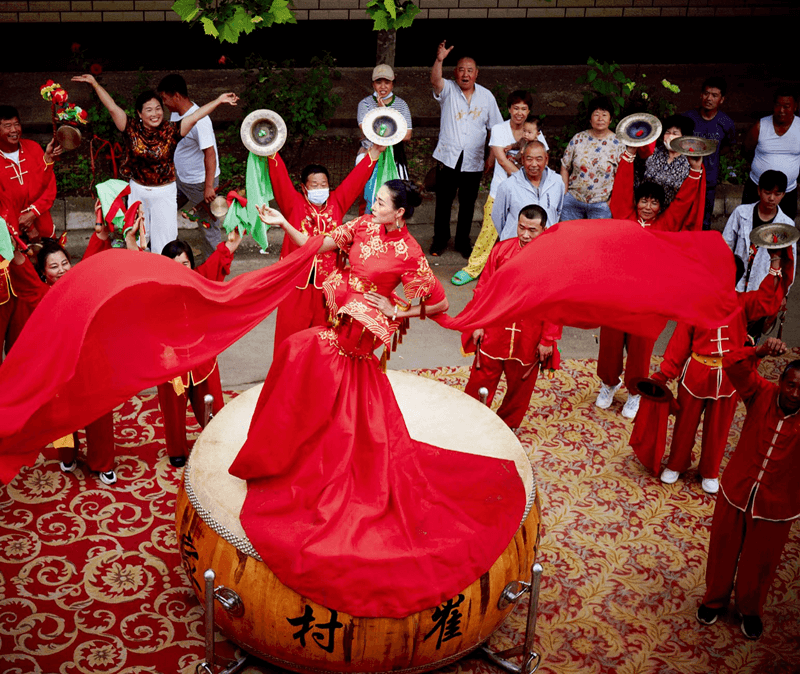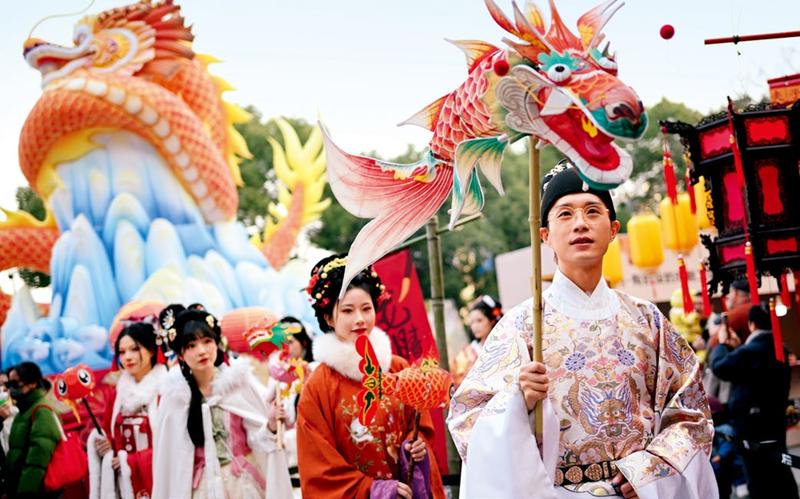China in the Morning

At nine in the morning, the sunlight gently falls on the land, draping a golden veil across cultural relics. Museums across China begin to open and the relics also wake from quiet nights: The abstract cloud and lightning patterns on the bronze wares of the Shang (c. 1600-1046 B.C.) and Zhou (1046-256 B.C.) dynasties, and gold threads on the embroideries of the Ming (1368-1644) and Qing (1644-1911) dynasties tell a turbulent and unpredictable history; the sunlight shines the ancient Chinese pavilions with hanging bells on their eaves and casts a shadow on the ground; the Buddha statues of stone grottoes drop their benevolent gazes unchanged for thousands of years.
Voices rise and fall along the streets and alleys, and the creaking sound of doors intermittently fills the old streets in ancient towns—in Chengdu’s teahouses, Sichuan Opera artists are painting their masks for face-changing performances; in northern courtyards, elderly people are creating paper-cuts that represent 24 solar terms; in Dai villages of Yunnan Province, young girls dressed in traditional straight skirts chase and splash water to each other to celebrate the Water-Splashing Festival, with their laughter reverberating in the air; and along the riverside of Lingnan, men are racing dragon boats, with the sounds of drums and waves heralding the arrival of the Dragon Boat Festival.

Young people in traditional attire parade through the Spring Festival market at Jingfeng Center in Nanjing, Jiangsu Province. (Photo by Yang Bo)
In China, a nation with 44 UNESCO intangible cultural heritage items, you are invited to have an insight into traditional Chinese culture, touch the veins of history and appreciate the deepness of time-honored Chinese civilization.